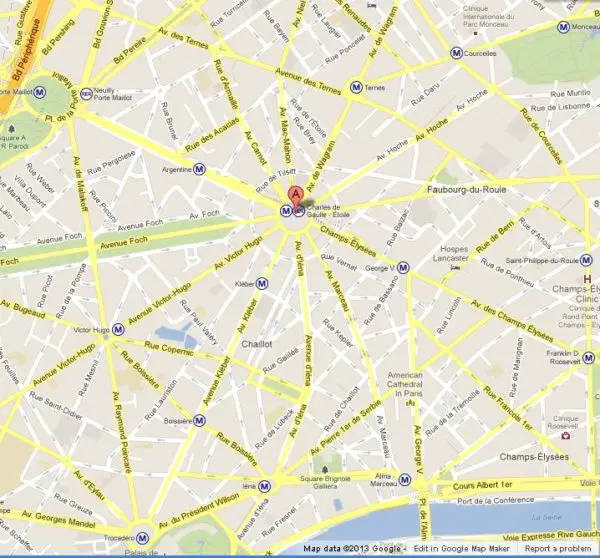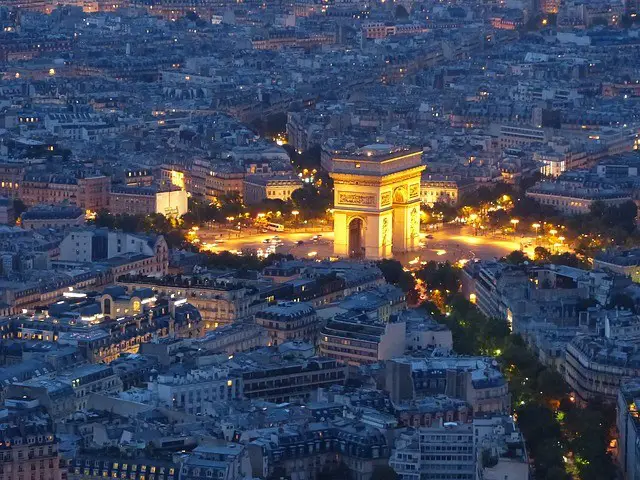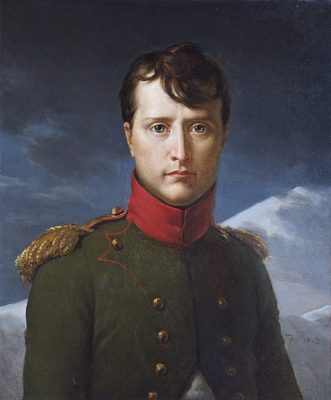Monuments are built all over the world to honor an event and keep the event alive in the future. They carry a history within themselves and convey a message to the upcoming generations. Arc De Triomphe is one of such monuments that was built to honor those who lost their lives in the french revolution and the Napoleonic wars. We have gathered a complete set of Arc De Triomphe Facts For Kids that will provide you with all the Arc De Triomphe information you need. You are going to learn about its locations, measurements, history, purpose, symbolism, architecture, cost, and many other interesting facts about Arc De Triomphe.
Arc De Triomphe Facts For Kids
1. What Is The Arc De Triomphe
- Arc de Triomphe is a well-known monument in Paris (France).
- It was built in the honor of the French army (the Grande Armee) by the order of the French emperor Napoleon.
- Its design is the Neoclassical sort of Ancient Roman Architecture, which is known as the “Astylar” design.
- The designer of the Arc was a French architect Jean Francois Therese Chalgrin.
- There is also a tomb of an unknown soldier of World War I just underneath the Arc.

2. How Old Is The Arc De Triomphe
- Arc de Triomphe is 213 years old.
3. Where Is The Arc De Triomphe Located – Arc De Triomphe Location
- Arc de Triomphe is located at the western endpoint of the Avenue des Champs-Elysees at the central region of Place Charles de Gaulle (former name Place de l’Etoile) in the Paris city of France.
- Three arrondissements (administrative districts in the Paris city) share the location of the Arc, that is, the 8th arrondissement from the east side, the 16th from the south and west sides, and the 17th from the north side.

4. How Tall Is The Arc De Triomphe – Arc De Triomphe Height
- The total height of Arc de Triomphe is 164 feet (50 meters).
5. Arc De Triomphe Measurements
- Arc de Triomphe is 164 feet (50 meters) tall, 148 feet (45 meters) wide, and 72 feet (22 meters) deep.
- The height of the bigger vault is 95.8 feet (29.19 meters) and the width is 48.0 feet (14.62 meters).
- While the smaller crosswise vaults have 61.3 feet (18.68 meters) in height and 17.7 feet (8.44 meters) in width.
- Arc de Triomphe of Paris was the highest triumphal arch of the world until 1938 when the construction of the Monumento ala Revolucion (monument in Mexico City that was built as a memorial of the Mexican Revolution) was completed.
6. Area Around The Arc De Triomphe
- Arc de Triomphe is located at the central point of Axe Historique, which is a sequence of monuments, thoroughfares, and buildings on a way extending from the enclosure of the Louvre Museum to the Arche de la Defense (the Grande Arche de la Defense).

7. Top Of Arc De Triomphe – Climb Arc De Triomphe
- To reach the top of Arch de Triumphe, you have to climb up to 280 stairs to enjoy the elevated view of Paris city.
- From the top, Paris city looks fabulous, and you can see about all the top landmarks in the city.
8. Arc De Triomphe Stairs
- There are 280 stairs in the Arch de Triumphe to climb the roof.
9. When Was The Arc De Triomphe Built
- On August 15, 1806, Emperor Napoleon ordered to build Arc de Triomphe.
- However, its construction was completed in 1836, about 15 years later the death of Napoleon who died in 1821.
10. Who Built The Arc De Triomphe
- Arc de Triomphe was commissioned by Emperor Napoleon.
- French architects Jean Francois Therese Chalgrin designed the Arc and started the construction along with Jean-Arnaud Raymond.
- Louis-Robert Goust and Jean-Nicolas Huyot further continue the construction work on the Arc.
- Guillaume-Abel Blouet then completed the construction of the Arc de Triomphe.

11. Why Was The Arc De Triomphe Built
- Arc de Triomphe was built to honor the soldiers of the Grande Armee (French army), who fought and died in the wars of the French Revolution and in the Napoleonic wars.
12. Why Is The Arc De Triomphe Famous
- Arc de Triomphe is famous because it is a historical monument that was built in the honor of the French Army’s soldiers who fought and died for France during the wars of Revolution and also during the Napoleonic wars.
- Arc de Triomphe is also a masterpiece of architecture, which is another reason for its popularity.
13. What Does The Arc De Triomphe Represent
- Arc de Triomphe is a symbol of patriotism.
- It represents the pride of the French people as this grand structure was built to commemorate the victories of the French Army.
- The tomb of the unknown soldier and the eternal flame on it represents more than 1,500,000 soldiers who lost their lives during the war.
The sculptures on all the four pillars of the Arc represents important victories of France, that are:
- Le Départ de 1792 or La Marseillaise represents a group of volunteers celebrating the cause of the French Republic during the Insurrection of 10 August 1792. There is also a winged embodiment of Liberty above the group.
- Le Triomphe de 1810 (sculpture by Jean-Pierre Cortot) represents a group celebrating the Treaty of Schonbrunn (also known as the Treaty of Vienna or the Peace of Schonbrunn). Napoleon is featured in the group and a goddess of victory putting a crown on his head.
- La Resistance de 1814 (sculpture made by Antoine Etex) represents the resistance of France to the Allied armies in the War of Sixth Coalition (March 1813 to May 1814).
- La Paix de 1815 (another sculpture by Antoine Etex) represents the Treaty of Paris.
- On the exterior faces of the Arc, there are six reliefs, which represent notable events of the French Revolution and the Napoleonic period.
The reliefs of the South facade are:
- Les funérailles du général Marceau is at the right side by P. H. Lemaire. It is the burial ceremony of General Marceau on 20 September 1796. He was a French general in the Revolutionary War.
- La bataille d’Aboukir is at the left side by Bernard Jemappes. It shows the Battle of Aboukir in which Napoleon was defeated.
At the North facade are:
- Le passage du pont d’Arcole at the right side is by J. J. Feuchere. It represents the Battle of Arcole between France and Austria.
- La prise d’Alexandrie at the left side is by J. E. Chaponniere. It represents the Fall of Alexandria in the Battle of Pyramids in Egypt.
At the East facade is:
- La bataille de Jemappes (or the Battle of Jemappes) by Carlo Marochetti.
- At the West facade of the Arc is:
- La bataille d’Austerlitz by J. F. T. Gechter. It represents the Battle of Austerlitz, one of the most important Napoleonic wars.
- There are allegorical figures on the great arcades of the Arc by J. Pradier, which represent different characters in Roman mythology.
- The ceiling of the vault is engraved with 21 sculpted roses.
- On the inner faces of the small arches, the names of the military generals of the French Revolution and Empire are carved.
14. Arc De Triomphe History Facts for Kids
- Emperor Napoleon had a great aspiration of making his empire’s capital the most fabulous and beautiful city in the world.
- After the victory in the Battle of Austerlitz (or the Battle of Three Emperors), Emperor Napoleon commissioned to build Arc de Triomphe in 1806 in the honor of the “Grande Armee”.
- The responsibility of designing the Arc and of finding the best location for the building was given to the French architect Jean Francois Therese Chalgrin.
- The site of Place de l’Etoile was accepted by Napoleon as a location of the Arc on May 9, 1806.
- The construction of the Arc was started on August 15, 1806, by the architects Jean Francois Therese Chalgrin and Jean-Arnaud Raymond.
- Only putting the foundations of the Arc took two years.
- In 1810, when newly married Napoleon entered Paris city along with his Austrian bride Archduchess Marie-Louise, he had a wooden model of a complete Arc de Triomphe that was to be built.
- In 1811, Jean Chalgrin died and the task of building Arc was taken over by his former pupil Louis-Robert Goust.
- In 1814, the construction work was stopped due to the defeat of France.
- In 1823, Jean-Nicolas Huyot was commissioned to continue the work of Arc construction.
- In 1832, Jean-Nicolas Huyot was removed from the task of Arc construction and was taken over by Guillaume-Abel Blouet.
- Guillaume-Abel Blouet completed it in 1836 during the reign of King Louis-Philippe I.
- In 1840, King Louis-Philippe I got the permission from British to bring back the remains of Napoleon from Saint Helena to France.
- On December 15, 1840, the remains of Napoleon were passed under Arc de Triomphe on the way to Les Invalides, where is the final resting place of Emperor Napoleon.
- On May 22, 1885, the dead body of French poet and novelist Victor Marie Hugo was unveiled under Arc de Triomphe before burial in the Pantheon.
- On August 7, 1919, French aviator Charles Godefroy passed his biplane successfully through the Arc de Triomphe.
- After its construction, Arc de Triomphe began to be a rallying point of parades of French troops after victorious military campaigns and for the annual 14 July military parade on the Bastille Day.
- Some of the popular victory marches under or around the Arc de Triomphe are the march of the Imperial Germans in 1871, of the French in 1919, of the Nazi Germans in 1940, and in 1944 and 1945 of the French and the Allies.
- In 1995, the insurgents of the Armed Islamic Group of Algeria put a bomb near the Arc de Triomphe, due to which 17 people were wounded.
- Arc de Triomphe also experienced graffiti and destruction during the Yellow Vests Movement (also known as the Yellow Jacket Movement) that began in France on November 17, 2018.
15. Arc De Triomphe Architecture Facts for Kids
- The architecture of Arc de Triomphe is the “Neoclassical” architecture.
16. What Is The Arc De Triomphe Made Of
- Arc de Triomphe is made of stones.
17. Arc De Triomphe Cost
- Arc de Triomphe cost 9.3 million francs, which was a huge amount of money at that time.
- According to the value of franc in 1838, the current value of that amount is equal to about $2 million.
18. Arc De Triomphe Hours – Arc De Triomphe Opening Hours
- The opening hours schedule of Arc de Triomphe is:
| Months | Opening Hours |
| 2nd January to 31 March | 10 am to 10:30 pm |
| 1st April to 30 September | 10 am to 11 pm |
| 1st October to 31 December | 10 am to 10:30 pm |
- On the following days, the Arc de Triomphe is closed:
- New Year’s Eve – 1st January
- Labor Day – 1st May
- VE (Victory in Europe) Day – 8th May
- Bastille Day – 14th July
- Armistice (1918) Day – 11th November
- Christmas Day – 25th December






